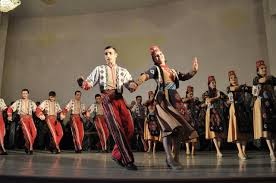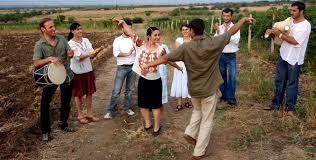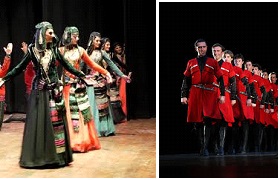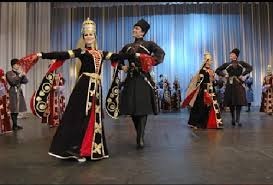
The land of Georgia is well known for its various traditional dances and polyphonic music. The numerous traditional dance forms of Georgia are Davluri, Kartuli, Honga, Acharuli and others. Each dance performs an action such as wedding, war, competition and harvesting of crops but the Acharuli dance is known for its flirtatious and light hearted movements created on stage by men and women. The Georgian love for land and life is well encompassed in the movements of spontaneous celebrations called Acharuli. The dance is more informal and is performed with a playful and teasing mood by its performers. The happiness surrounding the Acharuli dance form is so contagious that even the audience is tempted to shake a leg or two. Accompanied by vibrant music and colourful costumes, the Acharuli dance is also embodied with graceful movements. Let us learn more about Acharuli in detail.
Acharuli dance has its roots in the Achara (Adjara) region of south–western Georgia, a country located at the cross roads between Europe and Russia. Georgia is a country which has seen many wars and battles and after gaining independence from different rulers in the 19th century, the Georgians show their happiness in the various forms of dance to the accompaniment of traditional polyphonic music and colourful costumes and cheerfulness. Acharuli is counted as a form of valley dance and is also known as Adjaruli dance. This dance is performed at various festive occasions.
Acharuli is a spontaneous form of dance and develops as it progresses. This form of dance does not conform to one particular style of dancing and follows random steps. It is a couple dance performed by a group of men and women. Men perform strong movements whereas the women perform in the lighter vein. The subtle nuances and the playful and flirtatious mood of its performing men and women is the main ingredient of the dance. The mood of the performing men and women defines the style of dancing the Acharuli dance, which is simple and definite.

Musical scene in Georgia is polyphonic, which means that a number of musical instruments are played together during celebrations and dance performances. Various dance forms including Acharuli are performed to the accompaniment of many musical instruments such as the bagpipe, panduri (a type of flute), changi (harp) and drums.

Acharuli dance is performed in the traditional Georgian costumes. Costume of men consists of an undershirt (piranha), underpants (sheidishy) wide trousers (sharvali) and a long elaborate jacket called chokha. The chokha is made from wool and is colourful and long–sleeved and worn with a belt that has a stiletto on it. The chokha has bandoliers on both sides of the chest, which are decorated with bullet–like designs and are called Masri. Women wear beautiful clothing called kartuli, which is a long dress bounded by floor length with decorated belt and has a decorated bodice and long laps. A head dress is made out of tulle veil (lechaki), bolster of silk and cotton (kopi), cardboard rim is made of velvet (chikhta) and a large calico veil covering the whole body (chadri) except the face is also worn by women.

Georgian traditional dance forms represent the Georgian attitude, which shows great respect for the women folk. Some of the dances are performed by men, some by women and some of the dances are performed by both men and women. Acharuli dance is performed by both men and women. The mood is playful, teasing and light hearted and the movements are defined by simplicity but without any disrespect towards women. Men show respect by maintaining a certain distance, which reflects the norms of the Georgian society. The strong and active steps are performed by men whereas women perform lighter and undulating movements.

G Kowledge of | 0 Comments >>
0 Comments
Leave Comment
Your email address will not be published. Required fields are marked.